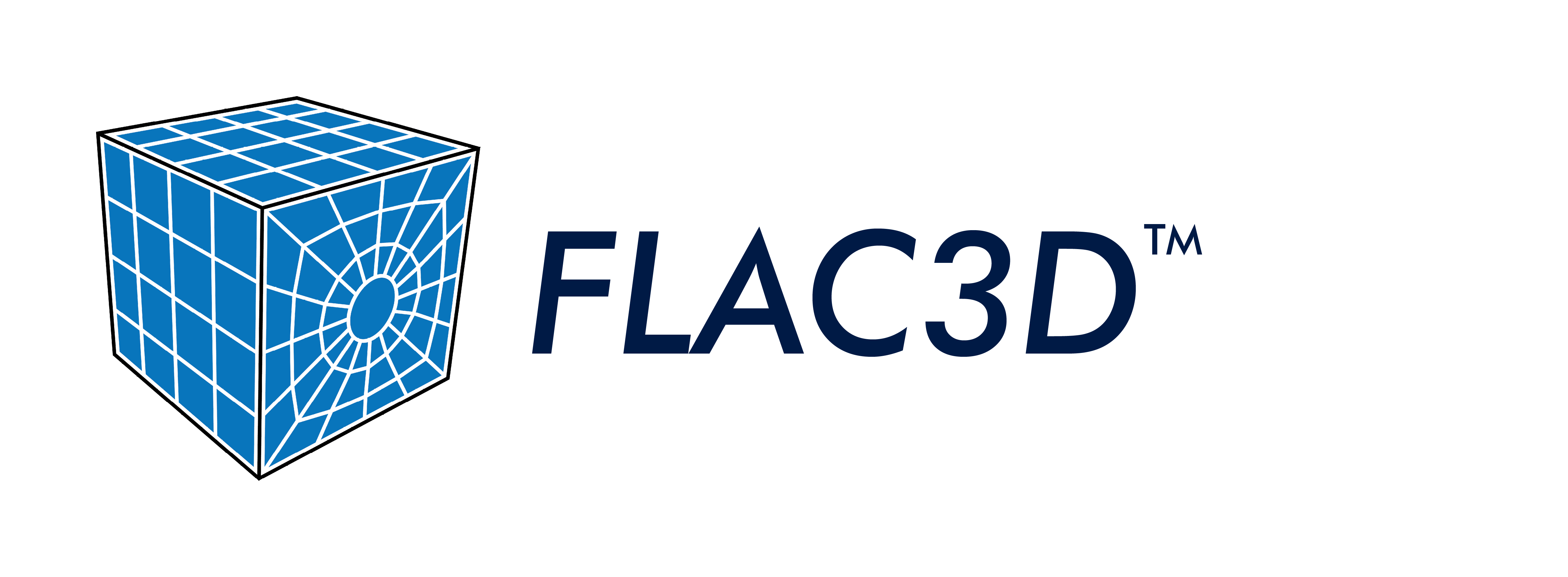Software Tutorials
FLAC3D 7 0 Octree Mesh Tutorial
In this example, a pile of earth is modeled overlying undulating ground. This tutorial demonstrates how a FLAC3D model mesh can be easily created using DXF geometries and the ZONE DENSIFY command. How to differentiate parts of the model into separate GROUPs using DXF geometries and the GEOMETRY-SPACE range logic is also demonstrated.
An Introduction to Python Scripting: Part 1
Introduction to Python scripting by reviewing key concepts and through demonstrations. Part 1 focuses on installing Python, variables and types, conditions and loops, and functions.
FLAC3D 6.0 PFC Plugin Conveyor
Technical Papers
Three-dimensional Modeling and Stress Calibration for a Complex Mining Geometry
Study stress situation for potential continued mining towards greater depths; stress calibration against stress measurements using numerical modeling; and use of calibrated model to study stresses at existing infrastructure, study stresses at potential future haulage level locations, and as input to local models.
Tunnelling and reinforcement in heterogeneous ground – A case study
Abstract
A case study of tunnelling in heterogeneous ground conditions has been analysed. The case involves a tunnel excavated in mixed-face conditions, where the main host material was rock, but for a distance of about 30 m, the tunnel had to be driven through a thick layer of soil, primarily moraine and sandy soil materials.During tunnel drifting, a "chimney" cave developed through the soil layer, resulting in a surface sinkhole.This case was analysed using a three-dimensional numerical model with the FLAC3D software code, in which the soil stratigraphy and tunnel advance were modelled in detail. Tunnel and soil reinforcement in the form of jet grouting of the soil, pipe umbrella arch system, bolting, and shotcreting, was explicitly simulated in the model. The studyaimed at comparing model results with observations and measurements of ground behaviour, and to replicate the major deformation pattern observed. The modelling work was based on a previous generic study in which various factors influencing tunnel and ground surface deformations were analysed for different cases of heterogeneous ground conditions.Model calibration was performed through adjusting the soil shear strength. The calibration provided a qualitatively good agreement with observed behaviour. Calculated deformations on the ground surface were in line with measured deformations, and the location of the tunnel collapse predicted by the model. The installed tunnel reinforcement proved to be critical to match with observed behaviour. Without installed pipe umbrella arch system, calculated deformations were overestimated, and exclusion of jet grouting caused collapse of the tunnel. These findings prove that, in particular, jet grouting of the soil layer was necessary for the successful tunnel advance through the soil layer.
FLAC3D mesh and zone quality
Mesh quality is crucial for the stability, accuracy, and fast convergence of numerical simulations. However, given the geometrical complexity of some models and the tools available for mesh creation, it is often necessary to accept meshes that deviate significantly from the known ideal shape.
